High blood pressure, also called hypertension, can affect the eyes, and cause a condition known as hypertensive retinopathy.
How Does High Blood Pressure Affect the Eyes?
If the blood pressure in the body is consistently high, the blood vessels inside the back of the eye can become damaged.
The back of the eye has several blood vessels inside the retina which can be damaged from long term high blood pressure.
When does Hypertensive Retinopathy Occur?
Hypertensive retinopathy is a general term to describe any damage to the retina from high blood pressure.
The first signs of hypertensive retinopathy are only detectable through a thorough eye health examination.
The later stages of hypertensive retinopathy may have symptoms that are noticed such as headaches or blurred vision.
Hypertensive retinopathy is classified into four different stages based on the signs that are observed in the retina.
The treatment and management of hypertensive retinopathy is determined by the stage in which the condition is classified.
Stage One
The first stage of hypertensive retinopathy is a mild presentation of the condition.
In this stage, there is retinal blood vessel narrowing observed in an eye examination.
The treatment for stage one hypertensive retinopathy is typically to monitor in four to six months and continue treatment of the high blood pressure.
In some cases, treatment may need to be altered if the current medications are not sufficiently controlling the blood pressure.
Stage Two
The second stage of hypertensive retinopathy is similar to the first stage but has additional retinal changes.
The retinal blood vessel narrowing seen with stage one hypertensive retinopathy is seen alongside changes to the blood vessel crossing in the retina.
When blood vessels cross over one another, if there is additional pressure, it can compress the vessel below and result in vessel changes.
The treatments for stage two of hypertensive retinopathy are similar to the treatments for stage one of hypertensive retinopathy.
Regular monitoring through retinal examinations is important along with maintaining the current medication treatment of the high blood pressure.
Since this stage is more advanced, your eye doctor may encourage you to schedule an appointment with your primary care doctor to review this finding.
Stage Three
The third stage of hypertensive retinopathy is a concerning finding and may begin to cause symptoms.
While the first and second stages of hypertensive retinopathy are mild and generally only require monitoring.
In stage three of hypertensive retinopathy, there may be blockages that cause a lack of blood flow or breaks within the blood vessels.
If the blood vessels are blocked or rupture, a portion of the retina may become damaged and unable to function appropriately.
In this stage, there may be blurred vision or visual field defects noticed.
For stage three hypertensive retinopathy, the treatment is to consult with your primary care doctor and consider changing the current medication therapy to better control the high blood pressure.
Stage Four
The fourth stage of hypertensive retinopathy is the most severe and is marked by all of the signs of the first three stages of hypertensive retinopathy in addition to a swollen optic nerve.
In this stage, the optic nerve swelling may result in severe headaches or blurred vision.
This stage of hypertensive retinopathy is a concerning finding and will require an urgent or emergent referral depending on whether or not other organs are affected.
Importance of Eye Examinations for High Blood Pressure
Since the earliest stages of hypertensive retinopathy are not detectable without an eye examination, it is important to regularly have your eyes checked if you have been diagnosed with high blood pressure.
Not everyone with high blood pressure will develop hypertensive retinopathy but it is important to have your eyes checked regularly to ensure that the current treatment is working appropriately.


0 Comments